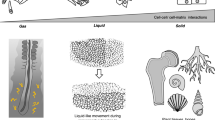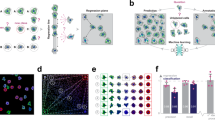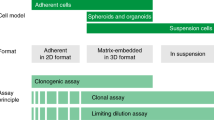Abstract
By treating hydra as a multi-phase system with each cell type constituting a separate biological phase the minimum number of components necessary to control cell differentiation can be determined.
This is a preview of subscription content, access via your institution
Access options
Subscribe to this journal
Receive 51 print issues and online access
$199.00 per year
only $3.90 per issue
Buy this article
- Purchase on Springer Link
- Instant access to full article PDF
Prices may be subject to local taxes which are calculated during checkout
Similar content being viewed by others
References
Burnett, A. L., Amer. Naturalist, 100, 165 (1966).
Webster, G., J. Embryol. Exp. Morph., 16, 123 (1966).
Lenicque, P. M., and Lundblad, M., Acta Zool., 47, 277 (1966).
Macklin, M., and Burnett, A. L., Exp. Cell Res., 44, 665 (1966).
Barth, L. G., Biol. Bull., 129, 471 (1965).
Kroeger, H., J. Cell. Comp. Physiol., 62, Suppl. 45 (1963).
Gibbs, J. W., Collected Works, 1, 55 (Longmans, 1876).
Bowden, S. T., Phase Rule and Phase Reactions (Macmillan, 1938).
Campbell, A. M., and Smith, N. O., The Phase Rule (Dover, 1951).
Ricci, J. E., The Phase Rule (Van Nostrand, 1951).
Author information
Authors and Affiliations
Rights and permissions
About this article
Cite this article
MACKLIN, M. Biological Phase Relationships. Nature 217, 622–624 (1968). https://doi.org/10.1038/217622a0
Received:
Issue Date:
DOI: https://doi.org/10.1038/217622a0
This article is cited by
-
Theoretical biology: A statement and defense
Synthese (1969)
Comments
By submitting a comment you agree to abide by our Terms and Community Guidelines. If you find something abusive or that does not comply with our terms or guidelines please flag it as inappropriate.



